World
Go News from the American Go Association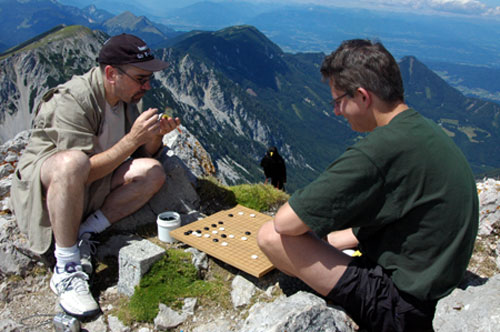
July 26, 2007; Volume 8, #56
2 DAYS TO
’07 U.S. GO CONGRESS
SEOK
UI HONG GETS UNEXPECTED SHOT AT EGC CHAMPIONSHIP
WHEN HALF A POINT IS REALLY
BIG
SAVING GO: A Modest
Proposal to Programmers (Stop!)
EUROPEAN GO CONGRESS SPECIAL REPORT: EGC Snapshots; Upcoming Euro Events; Bogdanov’s Long Road Back;
Crossing The Line; Five Minutes With Rainer Stowasser,
President of the Austrian Go Federation
A (VERY) SHORT
HISTORY OF GO IN EUROPE
(Part 2)
UPDATES & CORRECTIONS: Not So Gnu
COVERING THE EGC:
Meet The Team
U.S.
GO CONGRESS UPDATES: “Versatile keyboard
virtuoso and Congress Co-Organizer Matt Bengtson 1d will play a recital
on a 1785 Anton Walter fortepiano after the Opening Ceremony on
Saturday, July 28,” reports 2007 U.S.
Go Congress Co-Director Peter Nassar. Walter built Mozart's
instrument. Bengston’s program includes one of the first
sonatas ever written in America, the "Philadelphia Sonata no. 3" by
Alexander Reinagle, one of Mozart's late piano sonatas, KV 533/494, and
Beethoven's famous "Moonlight" Sonata, which Nassar says “is
especially atmospheric on a period instrument. Don't miss this rare
opportunity to hear an early piano in live performance.” The
Congress starts this Saturday: click here for the schedule of Congress
events Watch for top boards broadcast live daily on KGS,
updates on the AGA
website and daily Congress Editions of the E-Journal!
SEOK
UI HONG GETS UNEXPECTED SHOT AT EGC CHAMPIONSHIP: Jong
Wook Park 7d’s iron grip on the lead for the 2007 European Go
Congress Championship was broken Thursday when he fell ill and missed
Round 8, giving Seok Ui Hong 7d a chance to erase Park’s
1-point lead. Park was a perfect 7-0 while Hong, 6-1 had only lost to
Park and defeated 5-game winner Yoshida Takao 6d in Round 8, improving
his score to 7, just half a point behind Park’s 7.5, giving
him a clear shot at winning the tournament with two more victories.
Park, who is expected to remain hospitalized for the remainder of the
10-round tournament, will get half a point for each missed round. Click
here for full round-by-round results through Round 7. TODAY’S
GAME COMMENTARIES include Alexandr
Dinerchtein on his final-round Masters game against Ilya Shiksin and
Yoon Young-Sun 5P and Kang Seung-Hee 2P on the Round 4 Dali Cup game
between Rui Naiwei 9P and Park JiEun 6P. Dozens of top-board games,
commentaries and problems are posted
online
WHEN
HALF A POINT IS REALLY BIG: Although half-point
victories are not unusual in pro tournaments, they sometimes have a
much bigger impact, as illustrated in a number of tournaments this
year. Park Yeonghun 9P of Korea won the international Fujitsu this
year, making it into the finals with half-point wins in both the third
round and the semifinals. Park Jieun 7P of Korea won the international
Women's Dali Cup by taking the decisive third game from Kim Hyeoimin 4P
by just half a point. Cho U 9P became the challenger for the Japanese
Meijin title when he won two half-point games in the Meijin League,
which gave him his margin of victory. Similarly, Yokota Shigeaki 9P got
into the finals of the Japanese Gosei tournament, which he won to
become the challenger, by a half-point victory. Kang Kongyun 5P of
Korea beat Lee Changho 9P to take the Electron-Land Cup, after he won
his third-round game by a half point. There are a number of other, less
dramatic examples of the impact of half-point decisions this year as
well. So close, and yet so much can be won -- and lost.
- reported by Bill Cobb
SAVING
GO: A Modest Proposal to Programmers (Stop!)
By Paul Celmer
Now that checkers has been crushed and a computer has defeated the
world champion at chess, will go be the last great game to fall to the
robots? Let’s hope not. I hereby call upon any programmer
working on computer go to stop now.
Why? First of all, computer go would devalue human achievement.
Professional go players start training at a young age and work for
years to attain top rankings. Professional-level go-playing computers
would devalue these heroic efforts, making these rare skills available
at the local big-box computer store. When computers took over chess,
former world champion Gary Kasparov, arguably one of the greatest chess
players in history, retired from the game that allowed his brilliance
to sparkle and is now reduced to seeking worthy challenges in politics.
I don’t think even the most cold hearted of us would want our
spectacular champion go players to suffer such a fate.
Computer go would also mar the beauty of our game. Part of beauty is
mystery, and if go is ever “solved,” it too, would
be reduced to mindless tic-tac-toe. It would be an amazing technical
achievement to develop the software and hardware to create an entire
orchestra of symphony-playing robots. But shouldn’t some
things -- music, art, and poetry, just to think of a few -- remain our
own human domain? The go board should be preserved as a place where
humanity can dream free.
I am no anti-technology Luddite. I embrace useful advances in science
and technology, have owned a computer since the dawn of the PC age and
of course I have a DVD player and a cellphone. I have no grudge against
programmers and think we actually need even more in many areas
including alternative energy development and medical diagnostic
software. But we just don’t need a computer go program that
can beat humans.
No good can come from having our noble game and all its beautiful
traditions reduced to digital bits. Just because something can be done
does not mean it should be done. Who remembers the names of those who
programmed the computer 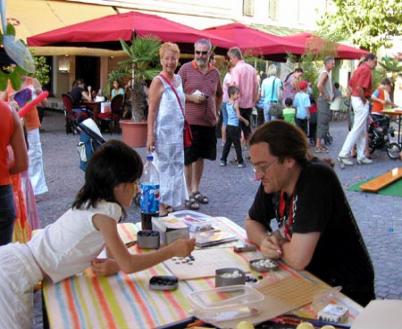 that
defeated Kasparov? Programmers, turn your praiseworthy ingenuity and
drive towards another mountain and leave go to stand unconquered,
gleaming and majestic. You will give up the
chance to win the millions promised to the first to
develop a pro-level program, but you’ll save our art and
better yet, when next we meet, I’ll buy you a drink to
celebrate!
that
defeated Kasparov? Programmers, turn your praiseworthy ingenuity and
drive towards another mountain and leave go to stand unconquered,
gleaming and majestic. You will give up the
chance to win the millions promised to the first to
develop a pro-level program, but you’ll save our art and
better yet, when next we meet, I’ll buy you a drink to
celebrate!
Celmer 1d is a technical writer in Garner, North C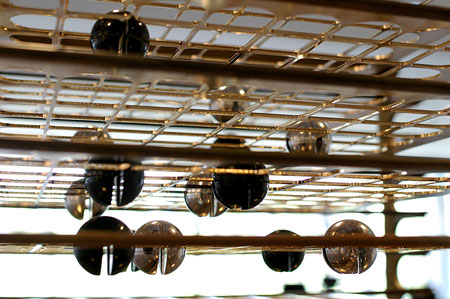 arolina.
arolina.
EUROPEAN
GO CONGRESS SPECIAL REPORT
E-Journal Managing Editor Chris Garlock is filing reports online
from the 51st
European Go Congress in Villach, Austria. Click
here for latest results. Game records are posted online
as well as videos
and photos
Check the main website
and the news
page for all the EJ’s EGC reports (use the arrows
to scroll back day by day). Top right photo: Chris Garlock
EGC
SNAPSHOTS:
(top
right) Atop Hochstuhl (Veliki
Stol) mountain on the Austria- Slovenia border, 2,236
meters up, Chris Garlock (l) plays tengen against Andreas Hauenstein
while an Alpendohle (Pyrrhocorax graculus)
kibitzes. Photo by Steffi
Hebsacker
(left)
Teaching go at the Villach Street Art
Festival during the European Go Congress.
photo by Chris
Garlock
(right)
3D Go close-up. Photo by Martin Chrz.
(below right) Guo Juan 5P – who is now
headed to the U.S. Go Congress -- lectures in the main
playing hall. Photo by Chris
Garlock
UPCOMING
EURO EVENTS: The European go scene is very active;
check out the European
Go Federation site for info and links. Upcoming events includ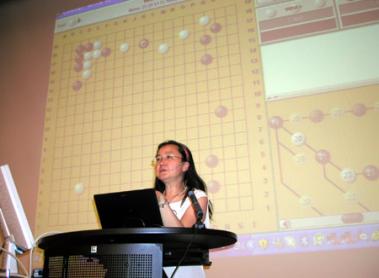 e the Casino
Go Tournament October 5-7 in Bratislava, a European Cup
event which includes the Bratislava Championship; the International
“Go to Innovation” Go Tournament
November 16-18 in Berlin, Germany; the 34th
London Open Go Congress December 28-31 in London, UK; the
2008 European
Youth Go
Championship March 6-9 on
e the Casino
Go Tournament October 5-7 in Bratislava, a European Cup
event which includes the Bratislava Championship; the International
“Go to Innovation” Go Tournament
November 16-18 in Berlin, Germany; the 34th
London Open Go Congress December 28-31 in London, UK; the
2008 European
Youth Go
Championship March 6-9 on 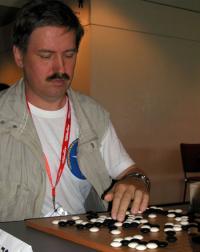 South
Moravia, Czech Republic; the 2008
European Go Congress July 26-August 9 in Leksand, Sweden;
the 2008
Go Isle of Man get-together
August 24-29; the 2009
European Go Congress in Groningen, The Netherlands;.
South
Moravia, Czech Republic; the 2008
European Go Congress July 26-August 9 in Leksand, Sweden;
the 2008
Go Isle of Man get-together
August 24-29; the 2009
European Go Congress in Groningen, The Netherlands;.
BOGDANOV’S
LONG ROAD BACK: It was good to see our old friend Victor
Bogdanov (l) of Russia here this year. Victor suffered a terrible
stroke in 2003 during a game on the last day of a tournament in Russia,
just a couple of months before the start of the St. Petersburg EGC, for
which he was the main organizer. His recovery was slow but steady and
we saw and interviewed him back at the EGC in Prague 2005.
Victor’s still using a cane to help him walk; although he
used play as a 6-dan, winning many tournaments, his playing powers
still have not completely recovered and he’s now playing
around 5d. "I planned to play in the pair tournament, but my partner
could not make it,“ Victor told us, "Instead, I took part in
the 13x13. I lost two, so I didn't play well. Recently in Russia, I had
some success. In the European Pair Championship on the Volga river, we
finished second. My partner was Elizaveta Karlsberg (2-dan). But with
the Karelia team we won the Russian Championship! I played with Alexei
Lazarev and two more players from the North.“ Lazarev won the
European title twice; in Namur (Belgium, 1991) he finished second after
Shutai Zhang from China and one year later in Canterbury (UK) he came
third after Takashi Matsumoto from Japan.
-
Peter Dijkema. Photo
by Chris Garlock
CROSSING
THE LINE: European Go Congress organizers face some
challenges that their U.S. Congress colleagues face on a much smaller
scale. “Getting to a European Go Congress inevitably involves
crossing borders,” Rainer Stowasser, President of the
Austrian Go Federation, told the EJ. “Some borders are
between national states and others are just bureaucratic
barriers.” While Austria is part of the Schengen treaty,
which allows people within its borders to travel anywhere they want,
Stowasser says the borders of the Schengen territory itself
“are well guarded and controlled by the use of
visas.” Thus, while some visitors – Japanese,
Koreans and U.S., for example -- only need a passport and can stay up
to six months, visitors from the eastern European countries must often
prove that they have enough money to return home. “There is
also a concern that such visitors may stay and move freely from Italy
to Sweden,” adds Stowasser, “since there are no
borders within the territory.” Officials try to control this
process with a visa process, which requires certain visitors to fill
out forms, provide copies of letters by someone within the Schengen
territory and, in some cases, pay money, “although not
officially of course.” While organizers were able to help
most of those who wanted to attend the Congress, sometimes all their
efforts were to no avail. Because they couldn't prove that they have
enough money to stay and come back, for example, the whole Moldavian t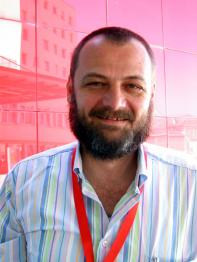 eam was
barred from visiting. “And some of the Bosnian players were
treated strangely,” said Stowasser, “not by the
Austrian embassy officials in Sarajevo, but by the
local guys employed there, who basically tried to extort money from the
players in return for the proper papers. After a phone call to the
Austrian foreign ministry, all the Bosnian players suddenly got their
visas.”
eam was
barred from visiting. “And some of the Bosnian players were
treated strangely,” said Stowasser, “not by the
Austrian embassy officials in Sarajevo, but by the
local guys employed there, who basically tried to extort money from the
players in return for the proper papers. After a phone call to the
Austrian foreign ministry, all the Bosnian players suddenly got their
visas.”
FIVE
MINUTES WITH: Rainer Stowasser, President of the
Austrian Go Federation
Austria, one of the original places in the West where go first took
root and flowered over 100 years ago, is now in the midst of a very
modern go boom. “We’ve seen an six-fold increase in
activity thanks to Hikaru No Go,” Austrian Go Federation
President Rainer Stowasser (l) told the EJ Tuesday night as the harried
but always cheerful EGC organizer grabbed yet another smoke outside the
Congress Center. A former Austrian youth champion, the 37-year-old
2-kyu works for the Austrian Science Board and has been playing go for
two decades. Stowasser says the Gote Go Club in Vienna alone has over
100 members now, many of them young players who have come to the game
through exposure to Hikaru and playing on the Internet. There are an
estimated 3-4,000 go players in Austria, nine clubs in Graz, Linz,
Krems and Vienna, “where you can play go every
night.” Stowasser also credits the presence of professional
go player Kobayashi Chizu 5P, who’s teaching weekly classes
and helping inspire a new generation of players. Indeed, Stowasser
reports, that new generation has begun to assume the reins of
leadership as youngsters like Victor Lin 1d (16), Lothar Spiegl 3d
(23), and Thomas Kerbl 2d (24) push their way into the top ranks of
Austrian players. Following up on hosting this year’s
European Go Congress, the next big step for the Austrian Go Federation
is re-establishing their own go center in Vienna after a 10-year
hiatus. Details are still being worked out, but Stowasser promised the
EJ we’ll be the first to know when plans are finalized. -
interview/photo by Chris Garlock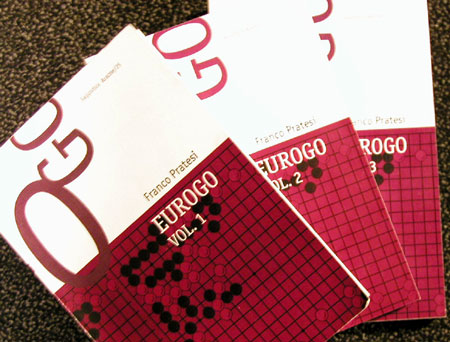
A
(VERY) SHORT HISTORY OF GO IN EUROPE (Part 2): As noted
in Part 1 (7/20 EJ), go in Europe followed two main routes of
transmission in the late 19th century, the first from China to England,
the other from Japan to Germany, as merchants, missionaries, travelers
and scientists moved back and forth between Europe and Asia. While the
game “did not develop continuously and remained within a few
family circles” in England, according to Franco Pratesi in
his thoroughly-researched Eurogo Vol. 1 (Arachne, 2004), “the
German path that started from Leipzig soon reached Vienna and other
towns.” From 1900 to 1920, go’s Austrian and German
roots flourished in Vienna and in Berlin (where Eduard and Emanuel
Lasker – no relation, and key to the later development of go
in the U.S. – learned the game), as well as in Pola -- now
Pula in Croatia – an Austrian navy base where go was popular
among navy officers, led by Lieutenant Artur Jonak von Freyenwald.
Go’s development in Europe took a major leap forward with the
publication by Professor Leopold Pfaundler of the 4-page handwritten
Deutsche Go-Zeitung starting in February 1909. The Go-Zeitung was
critical to helping build a vibrant go community as “For the
first time, players from Bonn, Berlin, Graz and Vienna could exchange
technical opinions.” Unfortunately, it lasted just a year and
then WW1 “significantly decreased the number of players and
interrupted most of the private contacts among them.” During
the post-war years, Pratesi reports, “the community of
German-speaking Go players grew and became more established,”
and the Go-Zeitung was re-established as go groups began to spring up
in other cities. Although economic depression and the rise of the Third
Reich presented challenges for the growing go community, the interest
and active support of world chess champion Emanuel Lasker provided a
major boost for go. “Go obtained a wide popularity in
1936,” writes Pratesi, “when Felix Dueball and Mr.
Hatoyama, a Japanese diplomat, subsequently Premiere minister, played a
game of Go by telegraph and had this event sponsored and continuously
reported in the newspapers.” The next fascinating chapter in
European go history involves how go players – who were
concentrated in Germany and Austria and disproportionately Jewish
– dealt with the Third Reich, which heavily controlled or
monitored all aspects of life, including go clubs. Key go players like
Emanuel Lasker, Marseille, Kastillan and Rosenwald fled, and
“both Kastillan and Rosenwald were active for some years in
the American Go organization and were elected several times as top
officers of the AGA.” European go history becomes exceedingly
rich and varied after this period, spreading throughout the continent,
and Pratesi’s Eurogo runs two more volumes, comprising a
total of more than 700 pages, the last, printed in 2006, bringing
things up to 1988. Eurogo is available online from Shaak-en
Gowinkel het Paard
UPDATES
& CORRECTIONS: NOT SO GNU: “As far as
I know, GnuGo uses the older traditional go-knowledge
techniques,” writes Russ Williams (Mueller On Computer
Go’s “Revolutionary” Advances, 7/23 EJ).
“According to my notes, Martin Mueller was playing a program
called Valkyria which beat him with the newer Monte Carlo
techniques.” Adds Mueller himself, quoting from the EJ
article, “’All withou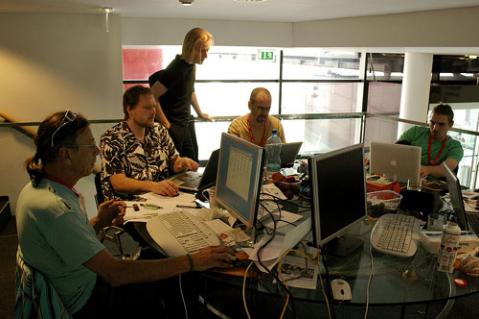 t a single
line of programming.’ That sounds odd. I'm sure I did not say
this. Of course there must be lots of programming.” Guo Juan
5P tells the EJ that the bottom line on her series of 9x9 games with
MoGo is that “Without komi, the computer is stronger, but
with komi the computer is weaker.” Our apologies for the
errors and thanks for the corrections! MISSING VAN DAM CREDIT: The
photo accompanying the “Korean Throwdown &
Dinerchtein On Masters Final” story (7/23 EJ) was by Judith
van Dam.
t a single
line of programming.’ That sounds odd. I'm sure I did not say
this. Of course there must be lots of programming.” Guo Juan
5P tells the EJ that the bottom line on her series of 9x9 games with
MoGo is that “Without komi, the computer is stronger, but
with komi the computer is weaker.” Our apologies for the
errors and thanks for the corrections! MISSING VAN DAM CREDIT: The
photo accompanying the “Korean Throwdown &
Dinerchtein On Masters Final” story (7/23 EJ) was by Judith
van Dam.
COVERING
THE EGC: Meet The Team: This year’s European
Go Congress editorial team is not only larger – and more
international -- than in years past, but has undergone a significant
shift in focus from paper to online reporting. Traditionally,
Editor-in-Chief Peter Dijkema of
Amsterdam has published as many as half a dozen hard-copy bulletins
during the course of the 2-week Congress, which have included game
commentaries, EGC news, photos and other useful EGC information like
good local places to eat. Dijkema may be a familiar name to some of our
readers: he published top-pro game commentaries in the Amsterdam-based
GO MOON for six years beginning in 1988. He’s also helmed the
EGC bulletins in Maastricht, Tuchola and Prague. An exciting new
development in EGC coverage is the video coverage posted by Harry
Weerheijm, also from Amsterdam. Weerheijm founded his eurogotv.com
site just a couple of weeks ago, storing the short videos on the
popular YouTube site. Before the Congress even started, eurogotv
already contained 172 short videos, mainly shot in Amsterdam during the
Amsterdam International Tournament, the Computer Games Olympics and at
Hamburg, an international tournament on the Panda-Net tour. The videos
include interviews, game reviews by professionals, videos from games in
progress and general tournament impressions. The well-shot and edited
videos add a real “you are there” quality to the
website coverage. Martin
Chrz is a professional photographer from
Czechoslovakia; earlier this year he covered the Wijk aan Zee chess
tournament in the Netherlands and his stunning go photographs have a
luminous quality that brings out the beauty of the game and the people
who play. American Go E-Journal Managing Editor Chris
Garlock of the United States provided first-time-ever
coverage of the event for the EJ and website
and coordinated the live broadcast team -- Thomas Weniger
(who also does the graphic design for the EGC bulletins) of Austria, David
Hilbert of Austria, Hu Bin
of China – which broadcast the top three boards daily on IGS.
Garlock, who covered the World Amateur Go Championships in Tokyo
earlier this year, edits the American Go E-Journal and American Go
Yearbook and has covered the last six US Go Congresses and other go
events in the US and elsewhere, posting news and photos online and in
the E-Journal. Photo by Martin Chrz: seated: Peter Dijkema
(far left), EGC Press Officer Thomas Szekely, Chris Garlock &
Thomas Weniger.
Published by the American Go Association
Managing Editor: Chris Garlock
Assistant Editor: Bill Cobb
Text material published in the AMERICAN GO E JOURNAL may be reproduced
by any recipient: please credit the AGEJ as the source. PLEASE NOTE
that commented game record files MAY NOT BE published, re-distributed,
or made available on the web without the explicit written permission of
the Editor of the E-Journal. Please direct inquiries to journal@usgo.org
Articles appearing in the E-Journal represent the opinions of the
authors and do not necessarily reflect the official views of the
American Go Association.
American
Go Association
P.O. Box 397
Old Chelsea Station
New York, NY 10113-0397

 that
defeated Kasparov? Programmers, turn your praiseworthy ingenuity and
drive towards another mountain and leave go to stand unconquered,
gleaming and majestic. You will give up the
chance to win the millions promised to the first to
develop a pro-level program, but you’ll save our art and
better yet, when next we meet, I’ll buy you a drink to
celebrate!
that
defeated Kasparov? Programmers, turn your praiseworthy ingenuity and
drive towards another mountain and leave go to stand unconquered,
gleaming and majestic. You will give up the
chance to win the millions promised to the first to
develop a pro-level program, but you’ll save our art and
better yet, when next we meet, I’ll buy you a drink to
celebrate! arolina.
arolina.
 e the
e the 
 eam was
barred from visiting. “And some of the Bosnian players were
treated strangely,” said Stowasser, “not by the
Austrian embassy officials in Sarajevo, but by the
local guys employed there, who basically tried to extort money from the
players in return for the proper papers. After a phone call to the
Austrian foreign ministry, all the Bosnian players suddenly got their
visas.”
eam was
barred from visiting. “And some of the Bosnian players were
treated strangely,” said Stowasser, “not by the
Austrian embassy officials in Sarajevo, but by the
local guys employed there, who basically tried to extort money from the
players in return for the proper papers. After a phone call to the
Austrian foreign ministry, all the Bosnian players suddenly got their
visas.” 
 t a single
line of programming.’ That sounds odd. I'm sure I did not say
this. Of course there must be lots of programming.” Guo Juan
5P tells the EJ that the bottom line on her series of 9x9 games with
MoGo is that “Without komi, the computer is stronger, but
with komi the computer is weaker.” Our apologies for the
errors and thanks for the corrections! MISSING VAN DAM CREDIT: The
photo accompanying the “Korean Throwdown &
Dinerchtein On Masters Final” story (7/23 EJ) was by Judith
van Dam.
t a single
line of programming.’ That sounds odd. I'm sure I did not say
this. Of course there must be lots of programming.” Guo Juan
5P tells the EJ that the bottom line on her series of 9x9 games with
MoGo is that “Without komi, the computer is stronger, but
with komi the computer is weaker.” Our apologies for the
errors and thanks for the corrections! MISSING VAN DAM CREDIT: The
photo accompanying the “Korean Throwdown &
Dinerchtein On Masters Final” story (7/23 EJ) was by Judith
van Dam.